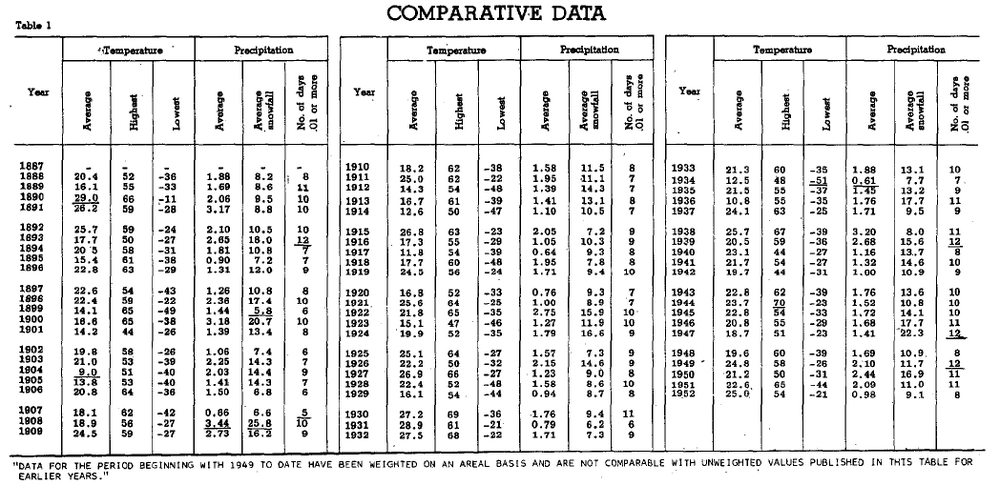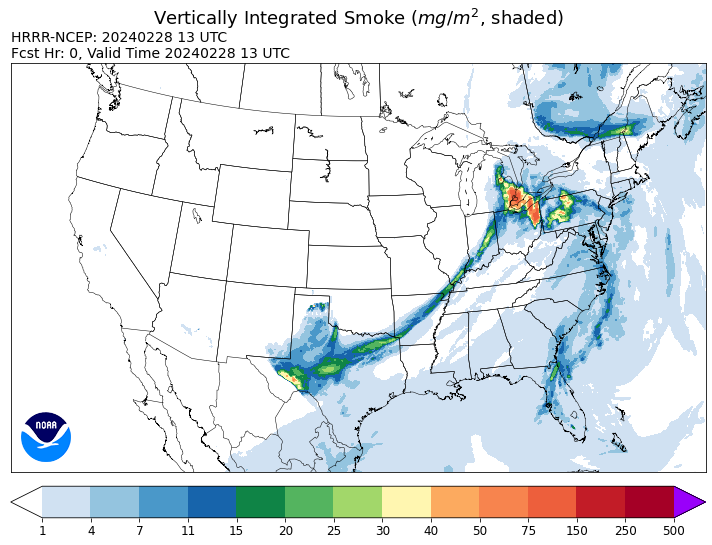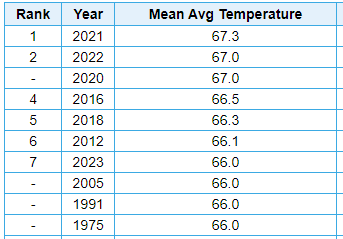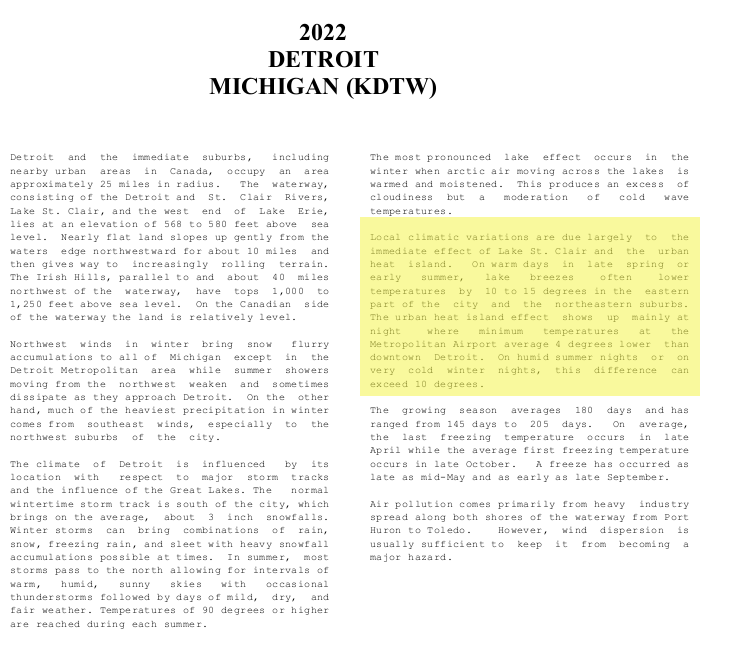
TheClimateChanger
Members-
Posts
4,052 -
Joined
-
Last visited
Content Type
Profiles
Blogs
Forums
American Weather
Media Demo
Store
Gallery
Everything posted by TheClimateChanger
-
-
38F at Milan on 7/3/1988 & 39F at Hillsdale on 7/1/1988. State low that year was a chilly 28F at Kenton (western U.P.) on the 1st.
-
It has been as cold as 31F in East Lansing during July. On July 15, 1863, the high was 69F and low 31F. No maximum & minimum temperature records for southeast lower Michigan at that time, but likely was in the 30s. More recently, and closer to southeast lower Michigan, the low was 40F on July 1, 1988 at Toledo. I would imagine some of the colder spots were in the upper 30s.
-
Ah, here it is. I noticed DTW reached 70 in February 1999, so I figured that was it. Confirmed. February 11, 1999: 72F, at Battle Creek February 12, 1999: 72F, at Three Rivers and Holland
-
Looking at the Michigan state record high for the month of February... Isolated data pre-1888, although the data we do have covers some of the warmer southern climes. February 27, 1867: 64F at Lansing [incredibly the low was 14F] --> possibly erroneous, 1930 publication indicates high of 66F on 2/22 was 4F warmer than any other February day of record in East Lansing dating to 1863 [original data unavailable] February 19, 1884: 64F at Detroit [tied] February 4, 1890: 66F at Benton Harbor February 21, 1930: 69F at Monroe February 26, 1944: 70F at Monroe and Wayne Not sure thereafter. Per climatologist Maximiliano Herrera, the state record prior to yesterday was 72F, although I'm not sure where or when that occurred. I thought maybe 2017, but the maximum was 70F at seven different stations on the 24th. They stopped including these nifty little tables in the monthly and annual reviews, making it a bit difficult to identify state records without the source data.
-
-
-
Crazy to see statewide monthly records beaten by 3-5F.
-
Highest hourly temperatures for February and winter season at Detroit (1942-present).
-
Mean temperature is the superior measure IMO. Number of 90 and 100 degree days can be influenced by drought. They claim July 1936 is hottest month on record in U.S., although I'm a little skeptical of that. It doesn't seem very hot compared to recent Julys in the Great Lakes or Northeast. In fact, outside of a 7-day period, the other 24 days at most locations would be bona fide summer of yesteryear territory. But even in Des Moines, where it's hottest on record. If you look at the humidity levels that summer [lowest on record], the heat indices would have been around the air temperature or lower most days. So a lot of those days - 106F, 108F - you have a 103F or 105F heat index. Yet Des Moines gets dewpoints in the upper 70s and 80s every year now, with heat indices into the 110s [even 120F]. So I would argue the combination of heat and humidity that we regularly see today is more deadly than even the worst heat waves of the Dust Bowl. Most of the country would be uninhabitable today without AC. This isn't reflected in the data, particularly if you only looked at the temperatures.
-
Pittsburgh/Western PA Spring 2024
TheClimateChanger replied to Ahoff's topic in Upstate New York/Pennsylvania
Impressive lightning with this cluster of storms. High of 68 each of the last two days IMBY. -
Maybe, I'm skeptical of some of those readings. If you look at Bradford, in rural Pennsylvania, surrounded by the Allegheny National Forest [so no UHI impacts], pretty much every recent summer is the hottest on record. So I don't know why there would be such a disconnect between the rural and heavily populated parts of the northeast. Wouldn't the UHI effect argue for the exact opposite impact? It's almost like the greenhouse effect ameliorates some of the UHI effect by making radiational cooling less effective in more remote areas.
-
Insane, breaks the monthly & seasonal record prior to yesterday by 7F.
-
Yeah, the bias on the HO-83 was primarily daytime only. I think there were some hot summers in that era, no doubt. But the first order station data for years like 1987, 1988, 1991, 1993, 1994 & 1995 is probably a couple degrees too high for daily maxima, relative to the current readings with the HO-1088 ASOS hygrothermometer [which was reconfigured to address the issues with the HO-83]. I mean it's probably too warm even in the cold, volcanic summer of 1992. I'm just pointing out the multiple warmer years from that era.
-
Not as hot as today. Take those readings with a grain of salt [except for 1999]. Maximum temperatures at first order stations averaged about 0.5C too warm, and from 1 to as much as 3C on sunny days with light winds - i.e., typical summertime weather. The HO-83 Hygro- thermometer « Climate Audit
-
I think if we measured temperatures the same way we used to, we would have 100F+ temperatures every summer. They had to shut down the original Baltimore station because it was so hot. The same station that is the official records from Baltimore before BWI opened. Somehow the deniers argue this shows the warming is fake. Obviously, it actually shows how ridiculous the warming has been when properly observed temperatures today are now exceeding the past ones taken in an absurdly warmed local microclimate on a rooftop. What level of cognitive dissonance is that? Source: How not to measure temperature, part 48. NOAA cites errors with Baltimore's Rooftop USHCN Station – Watts Up With That?
-
What a joke - why do they allow obviously bogus readings to stay in the record books? I'm guessing that was the HO-83? Should at least have an asterisk designating its questionable nature.
-
66 in Houghton Lake, Michigan, breaks the prior monthly record of 64F (1930) & seasonal record of 64F (2/1930 & 12/2001). The temperature at Sault Ste. Marie, Michigan has ticked up to 50F since that last observation. That value ties the February monthly high of 50F, set on February 16, 1921. Nowhere near the seasonal record though. Due to the lake effect, the warmest temperatures occur in early December. 65F at Green Bay ties the monthly record from 2/22/2017 & ties the seasonal record from 2/22/2017 & 12/16/2021. Some nearby airports registering 70F.
-
A nice 69F at Madison, Wisconsin, breaking the prior monthly record of 68F set on February 22, 2017, and breaking the prior seasonal record of 68F set on February 22, 2017 & December 16, 2021. Yesterday's high of 67F came up one degree short of those values.
-
68 in LaCrosse beats the prior monthly record of 67F set yesterday, and beats the prior seasonal record of 67F set yesterday and on December 5, 1998.
-
Up to 71F at Milwaukee, tying the monthly and seasonal record high from 2/22/2017. Excellent palm growing weather for our Wisconsin enthusiasts.
-
Rockford up to 75F, easily breaking the monthly and seasonal record high of 73F set yesterday (and obliterating the previous high water mark of 70F).
-
Moline up to 77F, breaking the monthly and seasonal record high set yesterday.
-
Up to 72F at both sites, as well as DTW. City Airport in Detroit is up to 73F. Prior to today, the earliest 70+F reading at Saginaw and Flint was March 7, 2000 & March 7, 1987.
-








